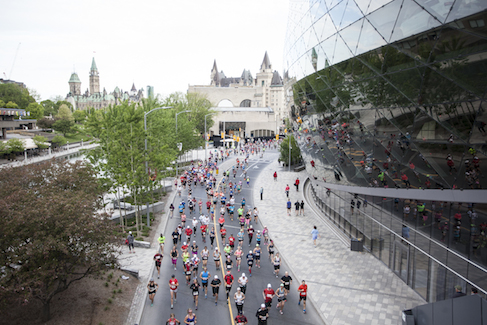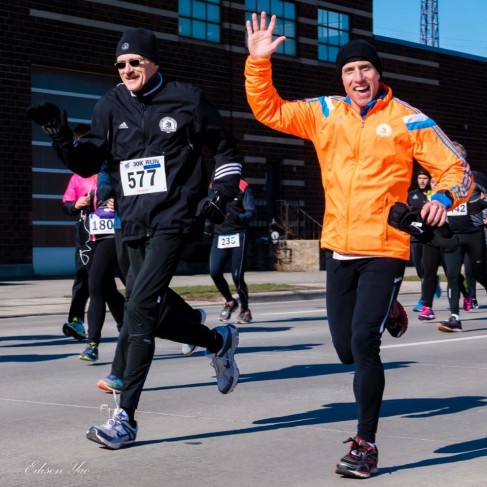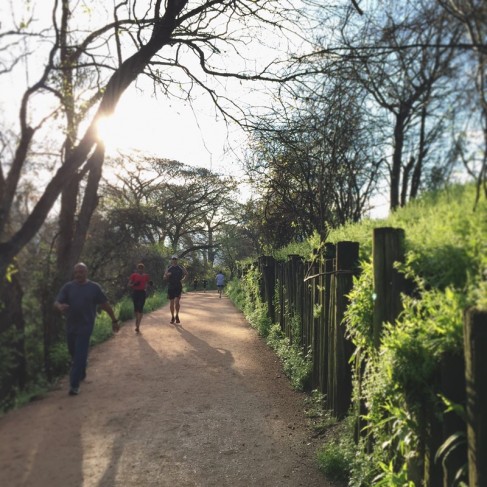This Aint His First Blue Rodeo
Jim Cuddy has been running for almost 40 years and no wonder he loves it—it’s how met his wife.
Blue Rodeo’s Jim Cuddy is a lot of things: an 11-time Juno award-winner, member of the Canadian Music Hall of Fame and lifetime runner, who was more interested in the places that his band’s tour would take him then losing himself in the drugs and alcohol one generally associates with a touring rock band. Ben Kaplan caught up with Cuddy before he performs at this summer’s Band on the Run half marathon and learned about his amorous stretching, globe-trotting sneakers and favourite running song of all-time.
iRun: I’m a connoisseur of great running stories, but the one about how you met your wife might take the cake.
Cuddy: I was at Queens in my last year and two days before Reading Week, 1978, I’m on the track stretching and all of the sudden, this woman ran by me with an unbelievably rosy glow.
iRun: A rosy glow?
Cuddy: I waited for her afterwards and she buzzed off quickly, but I found out where she lived and asked her for breakfast. She asked me to her formal and we’ve been together ever since.
iRun: So, who’s faster?
Cuddy: I was very, very moderately into running and she was very into it—she was in the phys ed program. I only ran with her to burn off sexual desire.
iRun: If that’s how you started, how do you stick to it?
Cuddy: It’s the only thing I can do anywhere. I can leave the bus and start running from wherever I am.
iRun: You still running at 60 after all these years?
Cuddy: Yeah, I’ve found the recipe perfectly suited to me: I’m a big proponent of the 5 to 10km run. I run for one CD.
iRun: What CD?
Cuddy: A Hayden record is perfect, really meditative. Sometimes the Beatles or the Stones, Wilco, the Weepies—which is a guilty pleasure and really shiny pop music—it depends what the mood is, but a Hayden record is 55 minutes and that’s a good length for me.
iRun: All-time favourite running song?
Cuddy: Ron Hynes, Godspeed. One of the top ten songs I’ve ever heard.
iRun: Have you ever run an organized race?
Cuddy: I did one half marathon which I enjoyed and remember coming to the point where the half marathoners went north and the marathon went to the beaches and not a single part of me wanted to carry on for the marathon.
iRun: Oh man, the marathon’s where it’s at.
Cuddy: I want my running to always be enjoyable. I don’t ever want it to be a burden and I don’t ever want to get injured. If I had to see people running it would break my heart.
iRun: How does running work in the life of a rock band?
Cuddy: It was when we were first touring, say 1991 and by that time I’m tired of the stuff we do as a band—tired of drinking and I don’t do dope— so I bought some shoes. I was in the southern US and often we’re in nowhereland, way outside the city—and I have zero sense of direction, I’m always lost.
iRun: There you are, somewhere lost in the southern US, in your new shoes.
Cuddy: And that’s how I started: I leave from our hotel wherever I am and get myself seriously lost—I can get lost in the arena from the stage to the dressing room—and for years that would determine the length of my run, just trying to figure out where the hell I am.
iRun: Your shoes have probably seen some things.
Cuddy: I look at my shoes and say, ‘You’ve been across the desert in Sicily and you’ve been in Africa,’ and that’s fantastic to me. The strangeness. I ran around the Taj Mahal.
iRun: That’s a cool approach to running, all the places it can take you.
Cuddy: When I run, I want my head on a swivel. I run everywhere in the world and it’s just, yeah, I love looking around.
Jim Cuddy plays Band on the Run on June 11 in Muskoka and the Harvest Picnic, with the Rheostatics, Jann Arden and the Cowboy Junkies, on August 27.




















 Our Magazine
Our Magazine
